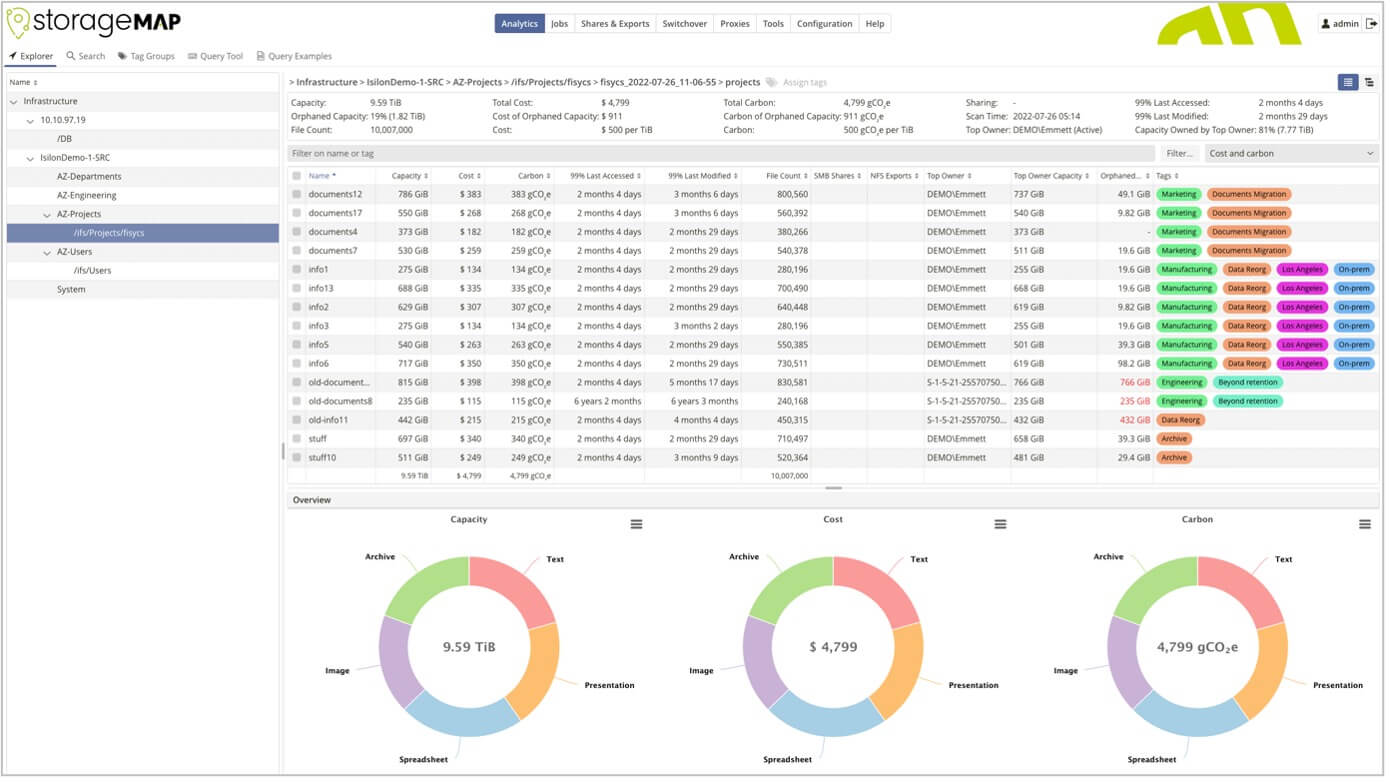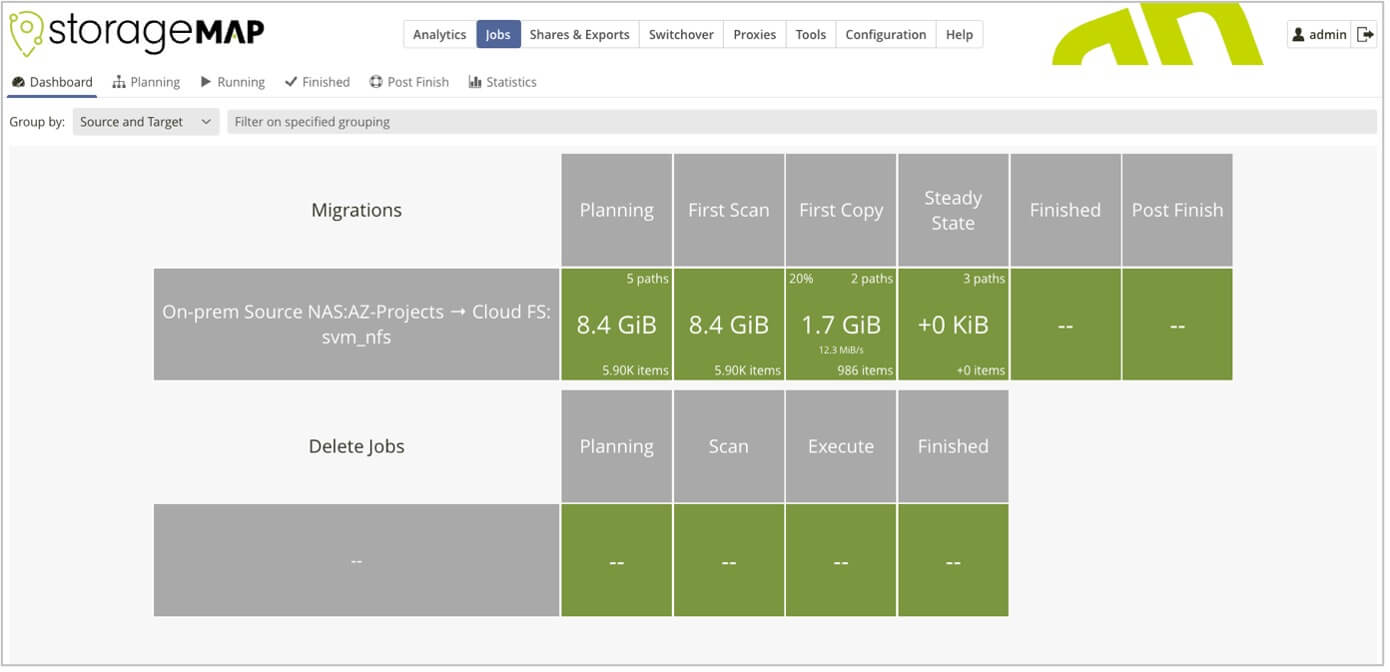In some of my most recent blog posts, I discussed how the top unstructured data concerns for enterprises today include maximizing scarce data storage resources, controlling carbon footprint, reducing data risk, and extracting value from data. Over the past several years at Datadobi, we have increasingly heard from IT leaders who were looking for a vendor-neutral solution to combat these issues and make unstructured data work for them instead of against them.
And that is how StorageMAP was born.
In response to feedback from our customers, we designed StorageMAP to be a true vendor and cloud-neutral unstructured data management platform that enables enterprises to get a grip on the top unstructured data management challenges of today. With the StorageMAP platform, IT leaders can discover, organize, and act on their data from a single interface across their entire unstructured data set on-premises and in the cloud. Running on top of our field-hardened data mobility engine, StorageMAP enables current and future IT leaders to effectively manage and take advantage of their ever-increasing amount of unstructured data.
Over the next few months, I will dive deeper into how StorageMAP addresses each of the top concerns individually. First, let’s look at cost control.
Taking Advantage of Unstructured Data Without Breaking the Bank
Reducing costs has always been a top priority for IT leaders and more so in the current economic climate. Trying to balance budget allocation responsibly with compounding project demands and timely sourcing of hardware can, unfortunately, make it easy for organizations to unknowingly send data center and cloud costs spiraling out of control.
The key to finding the right balance between on-premises and the cloud and controlling costs is having a solution that can discover exactly what unstructured data is stored, what data is suitable for either on-premises or the cloud, what data can be removed to free up space, and then take action to move it accordingly.
That’s where StorageMAP comes in.
StorageMAP enables IT leaders to categorize unstructured data into logical units so they know what they have, where it is, and who owns it. With the complete picture, organizations can take the appropriate actions to reduce costs such as:
- Mapping out what data should go where. StorageMAP enables IT leaders to do much-needed “tech refreshes.” Tech refreshes are the key to maintaining the most efficient, cost-effective, time-saving unstructured data storage estates whether on-premises, in the cloud or both. With StorageMAP, IT leaders can regularly update key elements of an organization’s IT infrastructure to reign in costs, maximize system performance and productivity, boost system functionality and scalability, and more.

- Accelerating intelligent cloud adoption. Moving data to the cloud comes with a host of benefits, including reduced cost and increased mobility and collaboration. IT leaders can use StorageMAP to determine what unstructured data should move to the cloud, and create the action to get it done.

- Eliminating redundant, obsolete, or trivial (ROT) data from the network. ROT data is just as the name suggests: garbage. It can create excess costs, easily pile up and hinder compliance regulation, and prevent IT teams from quickly accessing information. StorageMAP unveils where this data is hiding so that IT leaders can get rid of it and free up much-needed storage.

The burden of storage cost control shouldn’t lie on IT leaders’ shoulders alone — let us help carry the weight. StorageMAP can help maximize technology, delete unnecessary data, and enable intelligent data movement decisions to create better use of existing resources.
Want to take control of your unstructured data management costs? Click here to contact our sales team to find out how StorageMAP can help you today.
